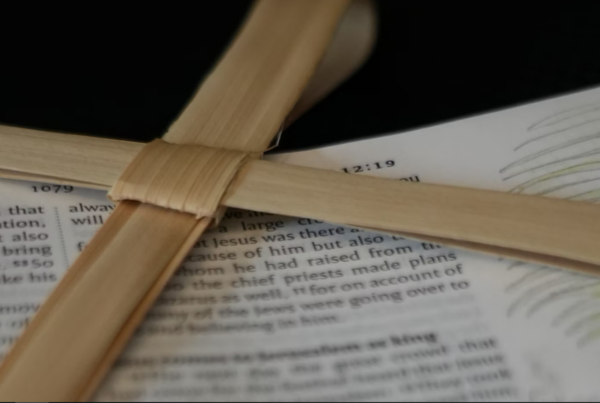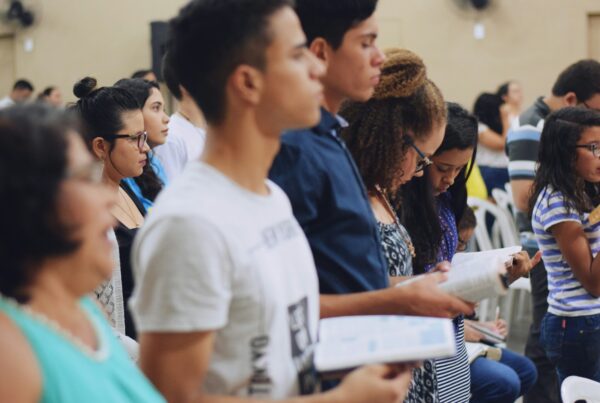The church moving forward happens through innovation. Based on my studies and my work in that area, I define innovation as happening at the intersection of difference. The church tries to get rid of difference in so many ways and assimilate us all into something. In that process, it loses its grip on ideas, creativity, and what God is doing new in the world.
If we look at Scripture, there is a constant moving. God is introducing new things. Did God stop doing new things once the end of the book of Revelation was written? I have a hard time thinking that’s true. If churches are to get re-engaged in a world in a way in which it represents the gospel now, it is through an understanding of diversity. What does that mean? What does that look like? How do you honor all people? How’s everybody’s voice at the table? These are the kinds of questions you have to start to figure out as a leader.
Related: Why intentional diversity matters and how to pursue it in your church
This material was originally recorded as part of the Renovations Project. It has been lightly edited and condensed for clarity.
New ideas spur on innovation
When you bring those differences together, that actually spurs on innovation, which spurs on new ideas and creativity. You go somewhere new because there are different people. You bring these different people into the room, and they create something completely outside of how you thought things should work or be. Also, that means we don’t know where it’s going. Until we get different people in the room or at the table all working together, innovation is not possible. If innovation is not possible, we’re going to stay where we are. But if we do it, then we have no idea what’s going to be created. It’s like a lab. If one thing doesn’t work, keep going.
Related: Why church leaders need to lead out of imagination, not memory
We don’t do that with the church. We don’t do that with nonprofits. Nonprofits are the labs for our social problems in the world. If nonprofits are our labs for the social problems in the world, stop hindering them from spending your dollars the way you want them spent. We cannot innovate like that. For example, instead of saying, “There’s a problem with education, and this nonprofit is going to work on helping children who are falling behind educationally,” say, “Hey, nonprofit working on that problem, we want you to do it the way we see fit. We want [you] to dictate how that happens.”
We cannot separate the sacred and secular
Young people, let’s say Gen Z, are living the dichotomy of sacred and secular. If the sacred isn’t allowing them to innovate, create, and do new things, that’s going to happen in the secular realm. All the creativity, all the energy, all the resources that lie with young people, and their ideas, and their life, and their energy, and all of that goes towards the secular side. And then they begin to understand that the church is only about this thing; it’s not about all this new stuff, all of this alive stuff. They see that the church doesn’t care about our music, and they don’t care about how we see the world. The church doesn’t care because we’ve created that dichotomy. The Jesus of Scripture doesn’t walk that dichotomy.
The Jesus of Scripture brings things together so that my presence as a follower of Jesus in the midst of solving mass incarceration, in the midst of solving immigration, in the midst of what does new music sound look like, in the midst of not wanting to come to a steeple, but rather sitting around with a group studying Scripture. The Jesus of Scripture presents himself that way.
Related: Justice and culture are relevant to the church today
What leaders need to think about is how do they live the sacred within their work and life, that it is always present. Then grace is always present because I’m going to present that in the public square, if you will. I’m going to represent peace; I’m going to represent a new way. All of these things that Jesus brings together for us comes out as he relates to people, and we’ve taken that away.
When you examine it deeply, we’ve actually taken all of the sacred out of the public square and put it over here in our buildings and in our steeples. And said, “If you want some of this, you come over here.” And that’s tragic because that is not the Jesus of the Scripture that I know and believe.
Bring innovation into the old way of doing things
How do leaders bring innovation into this old structure? Do you know Spirit Airlines? Do you know Delta owns Spirit Airlines? Why would a top level airline like Delta create Spirit Airlines? That’s their research and development. Spirit Airlines does crazy things, like the seats are much closer, charging for baggage, etc. That’s Delta’s innovation space.
What leaders and pastors in old spaces need to do is create a research and development piece of innovation. You can’t lock innovation into the old guard’s management of it. The old guard cannot manage innovation, so you create something new that’s going to be able to run. For example, here is this space and department, and they are going to do a new thing every week. And it might be wacky, it might be crazy, it might be off the cuff, but they have the funding, and the permissions, and the management of themselves to do that.
What’s going to happen is that something is going to work. When something works, then we transition it into our main space. That’s the way innovation needs to happen. It needs to be in its own free flowing space so that it is not managed by the old guard, because when it is managed by old guard, it is held up.
Related: Experimenting on the margins: my journey into adaptive leadership
Look for bridge builders
You need somebody building in between the old guard and the new innovation. You need someone within the old guard who is actually the helper for the innovators. The old system cannot handle innovation. If you think about many denominations—I’ll use the example of the Methodist where I work—most of the people I work with are either lifelong Methodists or started in their twenties, and now they’re in their fifties and sixties. They actually don’t have the wiring to think outside of the system they are a part of.
When I bring a concept from out here in, they don’t have a place to put it. There are times when bringing something new in is going to disrupt because the disruption is going to be needed to bring anything new in. There’s timed and well-placed disruption, but then there’s also somebody who’s not allowing this old wiring to want to take over to do things. These people, often they are mavericks or don’t fit in the old system well, might be your bridge builders. Being in and understanding the old way and being energized and excited about innovation actually helps that person build those bridges.

Renew your church’s imagination for ministry
The Renovations Project helps leaders learn, together.
- Thought-provoking masterclasses
- Personalized coaching
- Immersive visit to a ministry innovation hub
- Ministry innovation grants up to $5,000

Leroy Barber
Leroy Barber is director of innovation in the United Methodist Church. He is a pastor, innovator, entrepreneur, author, and lover of the arts. He has dedicated 30 years to working toward what Dr. Martin Luther King Jr. called “the beloved community.” Leroy and his wife, Donna, have been married for 35+ years and have six children. They both participated in listening sessions about innovation hosted by the Reformed Church in America.



